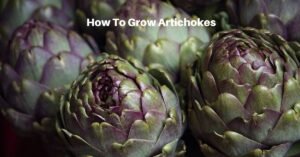Cucumber beetles are notorious pests that can wreak havoc on gardens and farms, particularly targeting cucurbit plants such as cucumbers, squash, and melons. These small but destructive insects pose a significant threat to crop yields, making it crucial for gardeners to identify them, understand their behavior, and implement effective organic control measures.
Physical Description
Cucumber beetles, members of the Acalymma and Diabrotica genera, are easily recognizable by their distinctive appearance. Typically about a quarter of an inch in length, these beetles are vibrant yellow or orange with black stripes or spots. Some species may also have a greenish tint.
Their elongated bodies and well-defined markings make them stand out against the green foliage of plants, aiding in their identification.
Plants Targeted and Damage Caused
Cucumber beetles have a particular affinity for plants belonging to the cucurbit family, which includes cucumbers, zucchinis, pumpkins, and squash. They can cause extensive damage to both the foliage and fruits of these plants.
One of the most significant threats posed by these beetles is their ability to transmit bacterial wilt, a disease that can lead to the sudden collapse of entire plants.
These beetles also feed on the leaves, stems, and flowers of cucurbit plants, causing visible damage in the form of irregular holes, wilting, and stunted growth. The damage is not limited to the above-ground parts; cucumber beetles can also target the roots. This leads to weakened plants that are more susceptible to diseases and environmental stress.
Controlling Cucumber Beetles Organically
Given the potential harm cucumber beetles can inflict on crops, it’s important to adopt effective and environmentally friendly control measures. Organic methods not only protect the ecosystem but also ensure the safety of the produce for human consumption. Here are some organic strategies to control cucumber beetles:
Companion Planting
Introducing companion plants that repel cucumber beetles can be an effective preventive measure. Plants such as radishes, nasturtiums, and tansy are known to deter these pests, creating a natural barrier for your cucurbit crops.
Beneficial Insects
Encouraging the presence of natural predators, such as ladybugs and other predatory beetles, is another way to keep cucumber beetle populations in check. These beneficial insects feed on the eggs and larvae of cucumber beetles, reducing their numbers without the need for chemical interventions.
Neem Oil
Neem oil, derived from the neem tree, serves as a natural insecticide with antifeedant properties. When applied to plants, neem oil can disrupt the feeding habits of cucumber beetles, deterring them from infesting the crops.
Kaolin Clay
A thin coating of kaolin clay on plant surfaces acts as a physical barrier, making it difficult for cucumber beetles to feed on the leaves and stems. This natural substance provides protection without causing harm to the environment. Kaolin is better known as an ingredient in fine china but has also been used widely in gardening.
Diatomaceous Earth
Diatomaceous earth is a powdery substance that, when sprinkled on plants, creates a barrier that damages the exoskeleton of many insects, including cucumber beetles. This mechanical action helps control the population of these pests without resorting to chemical solutions.
Insecticides for Cucumber Beetle Control
Organic methods are preferred, but sometimes there are situations where insecticides become necessary to get rid of a cucumber beetle problem. Always choose the least harmful products to the environment and other non-target organisms. Some options include:
Pyrethrin-Based Insecticides
Pyrethrin is a natural insecticide derived from chrysanthemum flowers. It is effective against cucumber beetles and breaks down rapidly, minimizing its environmental impact.
Spinosad
Spinosad is a microbial insecticide that targets cucumber beetles without harming beneficial insects. It has a relatively low environmental impact and is considered safe for use in organic farming.
Neem Oil-Based Insecticides
Neem oil insecticides, in addition to their repellent properties, can also act as contact poisons for cucumber beetles. These products are biodegradable and have minimal impact on non-target organisms.
Cucumber beetles pose a significant threat to cucumbers and squash, but understanding the implementation of organic control measures including companion planting and natural pest control can help free your garden of them. Fortunately, they’re easy to identify, so you’ll be able to stay on top of any potential problems!









